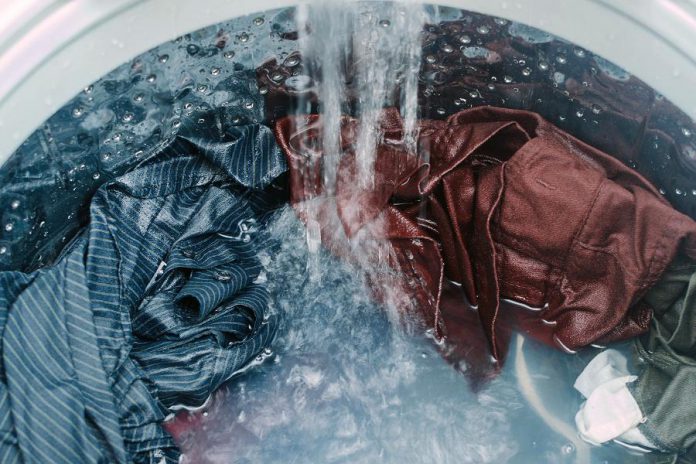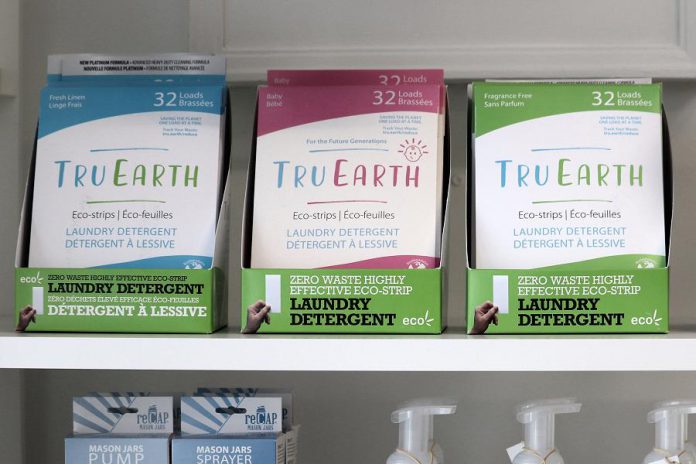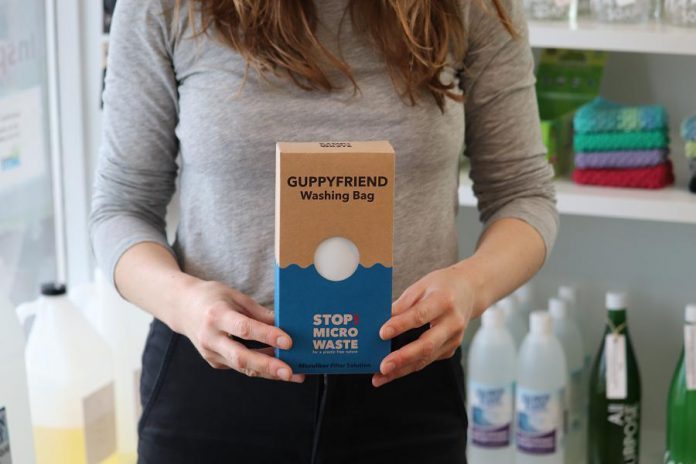
Throughout the month of May, students from across the region are zooming with the Peterborough Children’s Water Festival to learn about the importance of water and what they can do to conserve, protect, and improve their relationship with water.
Adults can also learn how to have a more sustainable relationship with water, starting with how we care for our clothes.
Did you know that every time you do a load of laundry, hundreds of thousands of tiny plastic particles — known as microfibres — wash off our synthetic clothing and are released into our waterways?
Most of us own some clothing or textiles made from synthetic materials, such as polyester, acrylic, and nylon. These fast-fashion materials are common because of their availability and affordability.
When we wash synthetic fabrics in the washing machine, hundreds of thousands of microfibres shed off the fabrics and flow down the drain. These microfibres make their way to local wastewater treatment plants, where most of them are too small to be filtered so they end up in our local rivers, lakes, and oceans.
Synthetic microfibres are particularly dangerous because they have the ability to disrupt the food chain. Microfibres are readily consumed by fish and other wildlife due to their small size. Since one animal eats another, the microfibres are able to travel up the food chain.
VIDEO: The Story of Microfibres
In recent research, plastic microfibres have been discovered in pretty much everything from plankton to humans. They have been found in the water we drink, the food we consume, and the soils we grow our food in. Microfibre pollution poses a major threat to our waterways, ecosystems, and human health.
To address this issue, we need systemic solutions from government in the form of policies and regulations. There are also behavioural solutions that we as individuals can offer to help reduce our microfibre footprint.
Here are five ways you can reduce microfibre waste:
1. Wash synthetic garments less frequently
The more often we wash our clothes, the more fibres shed off and enter our waterways.
Wear that synthetic sweater a couple more times before you wash it. Also, the less we wash our clothes, the longer they will last.
If you want to freshen up your clothes before they need a wash, try hanging them outside for some fresh air!
2. Take care of your synthetics
If you are suddenly thinking of throwing your synthetic garments in the garbage to prevent microfibre shedding, please think again. A lot of resources and energy were used to create those garments, and the smartest thing you can do is make sensible use of them for as long as they last.
When washing synthetic garments, be mindful of wash cycles and temperature. Switching to a gentle cycle and a cooler temperature can reduce microfibre shredding.

Synthetic garments tend to wear out faster when we wash them using more intense cycles and higher temperatures. The more worn-out our materials become, the more microfibres they shed. Choosing a shorter wash cycle or hand-washing when you can are also great options to help reduce microfibre shedding.
Be mindful of the detergents you use. Try using more gentle, eco-friendly detergents, such as Tru Earth and Down East. Tru Earth offers eco-friendly zero-waste laundry detergent strips and Down East is a liquid laundry detergent that is non-toxic and gentle on all fabrics. Both of these products are Canadian-made and can be purchased through the GreenUP Store at shop.greenup.on.ca.
3. Use a fibre-collection device
One of the most effective ways to minimize your microfibre waste is to use fibre-collecting device when washing your clothes.
Washing bags like the Guppyfriend can reduce microfibre pollution from your washing machine.
At the end of a wash cycle, you just scoop out the collected microfibres from the bag and put them in your garbage.

4. Be mindful when shopping for clothing
Choosing to purchase only 100 per cent natural fibre clothing is an effective way to avoid microfibre waste.
Whether clothing is made from wool, alpaca, cashmere, cotton, linen or silk, these natural fibres are biodegradable and can be broken down naturally — unlike plastic microfibres.
Clothing made from these materials is often more comfortable too!
5. Educate yourself and take action
Maybe this is the first you’ve heard of microfibre pollution. That’s okay! Many people aren’t aware of this issue, and that’s why it’s important to continue to spread the word and build awareness.
Take time to do your research and educate yourself as a consumer. Look for how transparent brands are about their responsibility to reduce microfibre pollution.
Many companies market their efforts to create synthetic clothing out of recycled plastics. The bonus to this is that it can reduce our dependence on the raw petroleum resources used to make new plastics, shifting us away from a wasteful linear economy and more towards a circular economy.

Be aware, however, that even garments made from recycled plastics will still produce microfibre pollution. The number of microfibres that are shed from different qualities of plastic is a relatively new area of study.
Obviously, avoiding synthetics entirely is the most robust way to reduce your personal footprint when it comes to microfibre pollution. That said, in time some studies may shed light on how some synthetic materials and design approaches may reduce microfibre pollution.
Next time you are buying a garment or doing a load of laundry, take a moment to consider the importance of water and what you can do to conserve, protect, and improve your relationship with water.


























